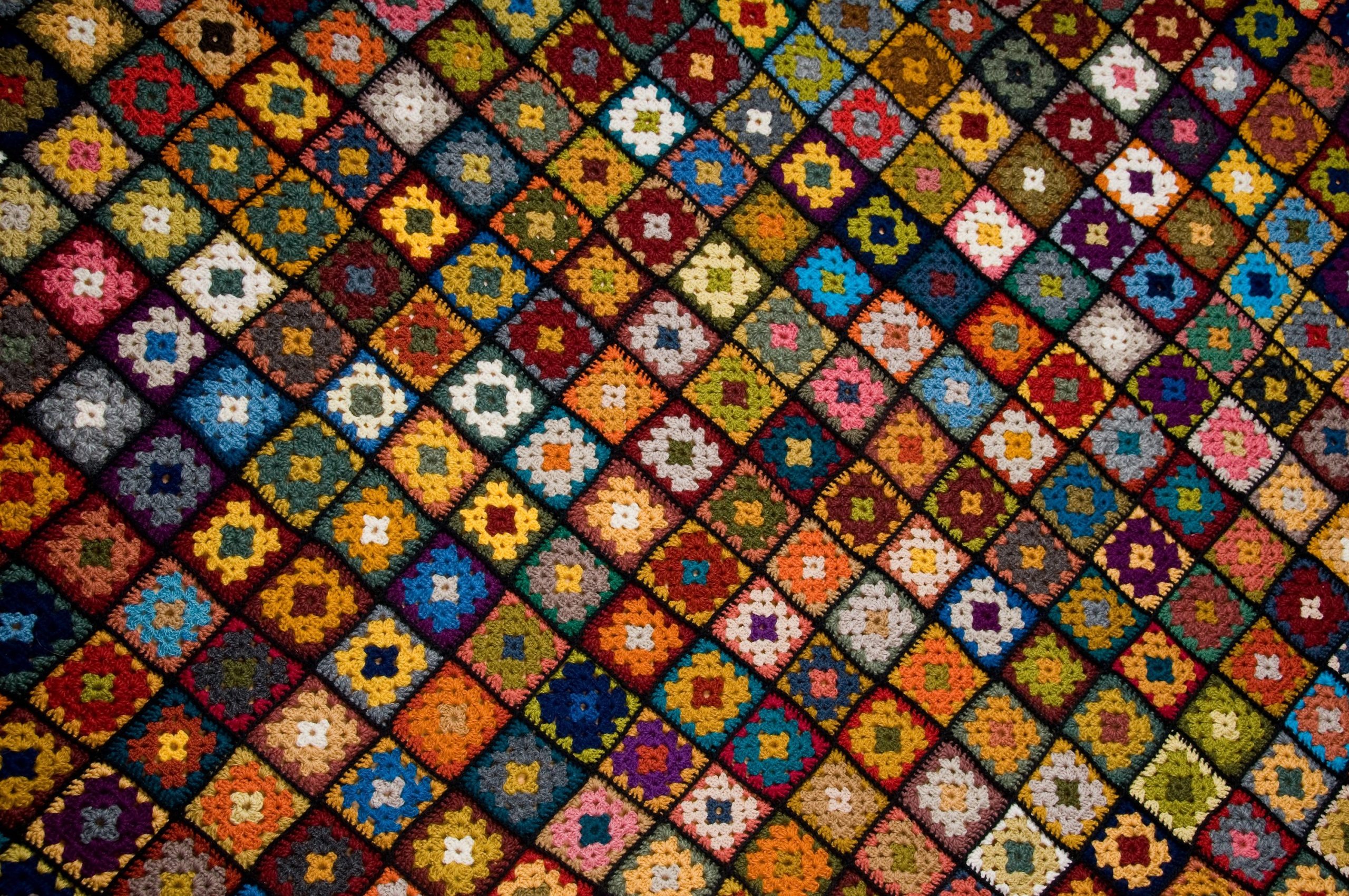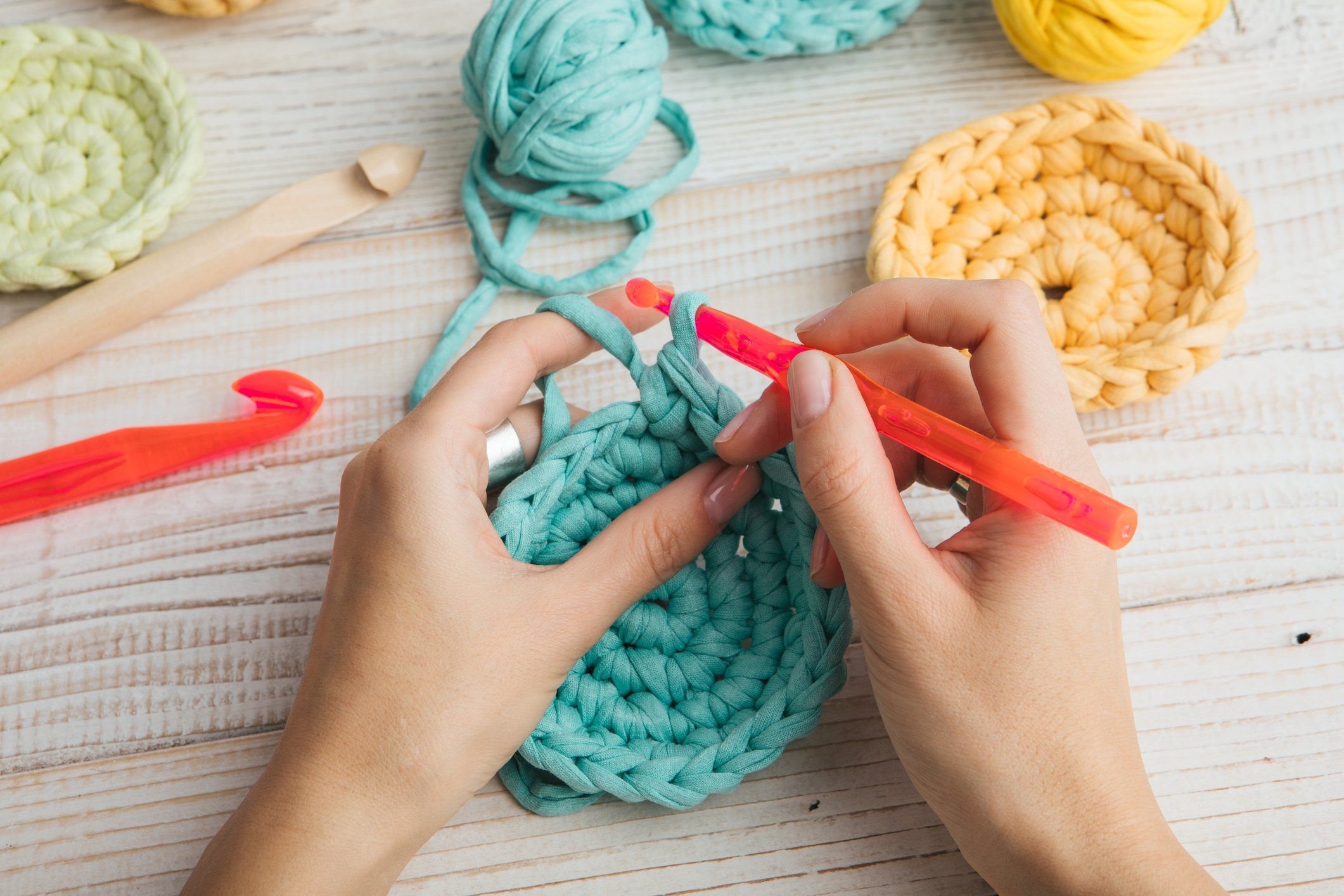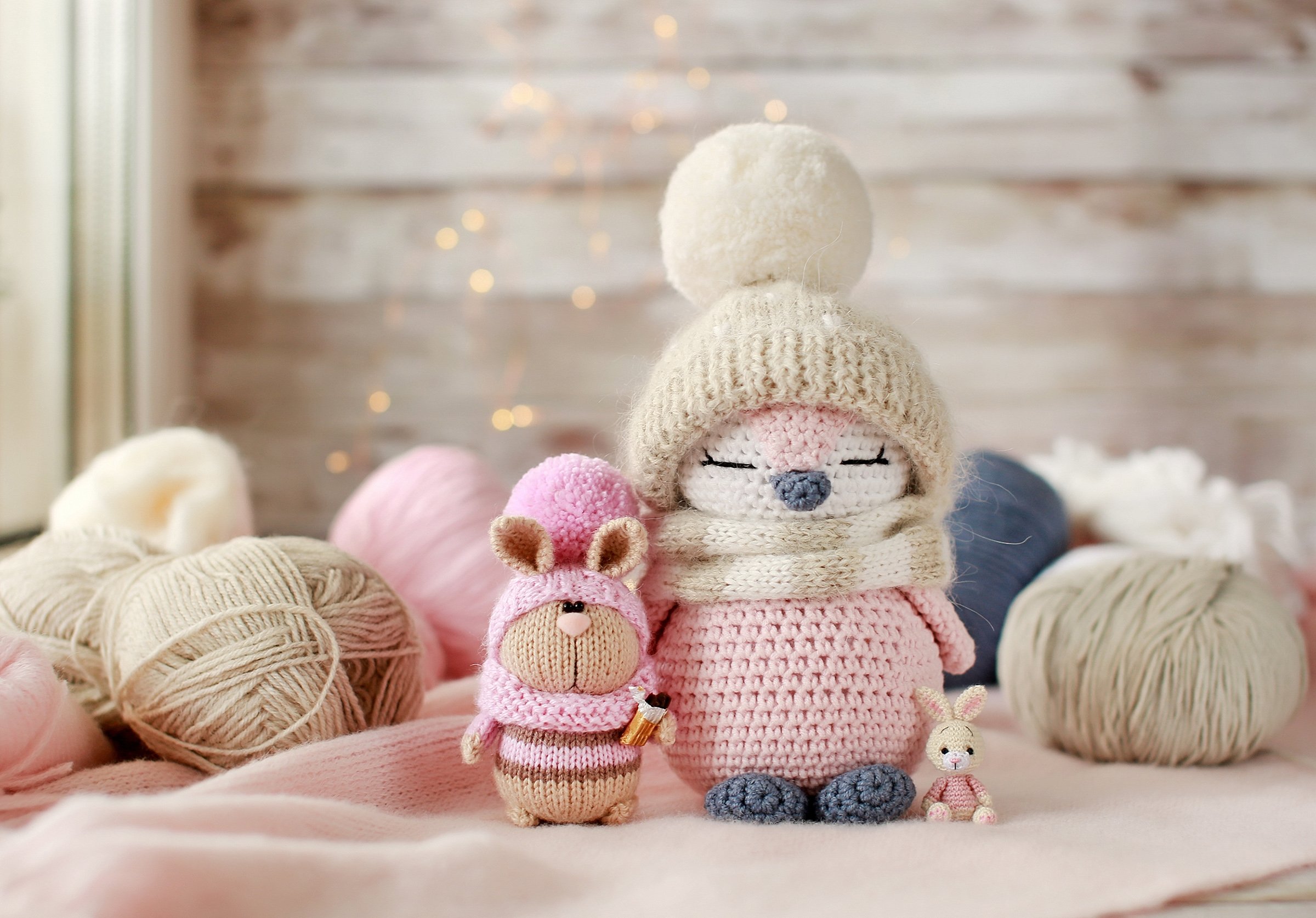Like many kids, I, too, had a go at knitting when I was young but never managed to get it to work. Dazzled by the intricate crocheting work of my other artsy family members, I attempted to get a start in the art but failed miserably. Whenever someone offered to help me to try again, I got discouraged as they all just rushed along or couldn’t fathom why I didn’t get it right off the bat. I started to hate the prospect of it despite all the amazing projects and ideas I was seeing everywhere.
Many years later with the help of the trusty internet, I found the world of tutorials and ended up plucking up enough courage to start over again. Now, I can say I have finished many crochet projects and am absolutely in love with the craft.
Advantages of switching from knitting to crocheting
I can think of many advantages for those who want to transition from knitting to crocheting. The first is you only need one hook instead of two knitting needles. Second, one of the most frustrating things about knitting is when you lose a loop. When that little rascal gets loose, it can – and most likely will – destroy your piece if you don’t know how to save it.
Not to bad-mouth knitting or other crafts, but with crocheting, you get your projects done much faster, so it is great for those crunched for time. Despite being a patient person when it comes to crafts, even for me, it was a bit of a pain. Knitting a simple scarf for my husband years back took me weeks (working on it every day for a few hours) to complete. When I wanted to dabble in crocheting I remember making another scarf and was surprised at how fast it was coming along. One thing that I noticed is that crocheted projects are usually denser, depending on the project, and make for a stretchier “fabric.”
Just as with knitting, the thicker the yarn, the bigger the needle you will need and vice versa. Many big projects can be turned into adorable keychains or charms if you just scale them down.
Probably one of the few disadvantages with crocheting, when compared to knitting, is that it takes more yarn to complete a piece. And patterns can be quite scarce with crocheting, compared to the many, many different kinds available for knitting. But as you work more spacially and not “row by row,” you can let your creative juices flow. In my opinion, this is actually a huge advantage because with more complex pieces you only need to know a few “techniques.”
Where to begin?
Terms like double crochet, single crochet, slipknot and many others might sound scary at first but once you get the hang of it, they’ll become second nature. But before you begin, consider lighter colored yarn to make it easier to see the actual stitches. When learning, you’ll want to see where the hook needs to go. Also, keep it simple with some acrylic yarn and stay away from the fuzzy or fancy stuff as it will only confuse you.
Yarn labels will tell you the kind of hook you need and if it feels like gibberish don’t be shy. Ask the shop attendant or other people shopping for yarn – the crocheting, or rather the crafting, community is very welcoming!
What terms or techniques do I need to know?
I will be listing techniques here so you can at least get an idea of what they mean, but it is always best to actually watch someone making them. There are thousands of videos explaining each of them with big yarn and big hooks so you can follow them without a hitch. I have been crocheting for years, but every now and then I need to check to see if I remember correctly.
Every crocheting project starts with a slipknot. Make a loop with some slack yarn dangling and through that loop pull the long part of the yarn. That’s square one, your start. Many of you might have done finger crocheting by repeating this step to create a long chain of slip knots, which is basically the foundation chain. Depending on your project this can be just a handful of “chains” or even hundreds.
Once you have your foundation chain ready, you will need to think about different types of crochet. One term that you will hear a lot is “yarn over,” which basically means you put the yarn over the hook and pull it depending on the chain.
The first one is a single crochet. Insert your hook into the foundation chain, pass the yarn over and pull it through. You will now have two loops on the hook so you yarn over again and pull it through the two loops. Congratulations, you are crocheting ladies and gents! Now you can get into each loop and repeat this step until you reach the end. This first row is usually the most finicky but trust me, it gets better after starting the second row. Once you have reached the end of the row, you will wonder how to move up. Easy! You chain one, just yarn over without doing anything else, and pull it through. You have moved up a bit and get to single crochet on. If you work your way back and forth like this you’ll get a pretty dense fabric in no time.
Double crochet is the big brother of the single crochet and thus needs a bit more room to breathe. Let’s say you have chained quite a bit and want to start making a row of double crochets. You will need to insert the hook into the third chain from the end you are working from. You yarn over, insert the hook into that chain and yarn over again. Pull those through, and you should have now three loops on your hook. You yarn over and pull through two loops on your hook, leaving you now with two on the hook. Yarn over again and pull it through the two loops. Writing it out sounds more complicated than it is to do – trust me.
And to be perfectly honest this is enough to get you started in the realm of crocheting. Of course, there are dozens of different crochet techniques, such as the half-double crochet, the puff stitch, the granny stripe stitch, Elizabeth stitch and more, but those you can experiment within due time.
You can create so many different designs, even with minimal knowledge. There is one point to take note of though. You may from time to time insert the hook in the wrong place and crochet into one chain several times or miss one altogether. Here, keeping track of your chain count is essential. That is also why working with lighter colored yarn and those on the thicker side is smarter if you are trying to get a feeling for it.

Your first project
Keep it small and simple. While learning these stitches you will want to keep it rather small to encourage yourself to go big(ger) soon.
You could start with the infamous Granny Square. I say this because if you have seen the fashion in the ’70s, you will have seen them everywhere: On vests, shorts, hats, bags and more! But essentially it is a small square which you start working from the middle out, growing it larger as you go. You might not be inclined to make it into a fashion statement, but it can also have many other uses. The simplest way to repurpose is to use it as a coaster. Or make many granny squares, sew them together and you’ll have yourself an Afghan blanket. Even when you think you have seen it all, all the different kinds and interpretations of Granny Squares will prove you wrong. Later down the line, you can turn your squares into hexagons and other shapes as well.
If you don’t want to attempt anything fancy and want to start small, just make a dishcloth or a shower cloth. Just work your rows up and complete the piece by cutting the yarn off with a bit of slack and pulling it through the last loop. I made many dishcloths during my learning phase, and they were great for practice.
If you would like to attempt to crochet an article of clothing, have a go at a basic beanie. Start off like you are crocheting a Granny Square – make sure to keep count to prevent it from turning out uneven and wonky. If you have a nice TV series to watch, you will probably finish one of those in maybe two or three episodes. Feel free to add decorations or change up the colors as you go.
If you want to go bigger, there are many tutorials out there for beginner-friendly shawls. They make for a great fashion statement and even though they seem quite chilly with all the holes, they keep you surprisingly warm. I always have one on my sofa in case it gets a bit chilly at night.
Amigurumi sounds outlandish, and it is. This crochet art for making little stuffed creatures or objects comes all the way from Japan. With this technique, you could make a basic donut, an adorable teddy bear or a crocheted plant – this is especially great if you can’t keep the real thing alive. There are tons of books and websites full of ideas to inspire creative Amigurumi critters and beautiful dolls of all shapes and sizes.
Last Updated on Jul 29, 2020 1:17 pm by Ayla Coşkun











Discussion about this post